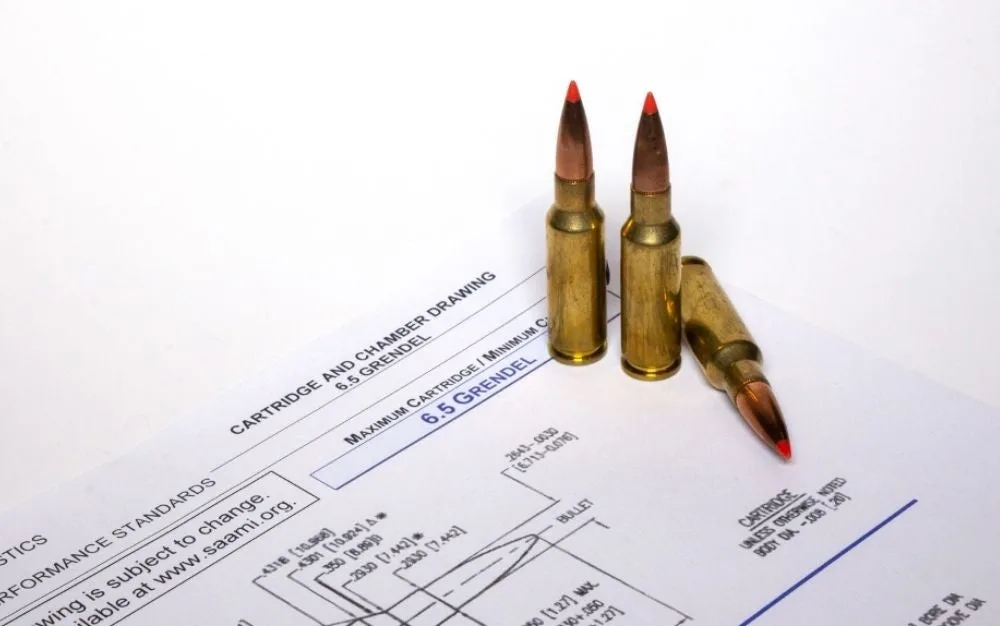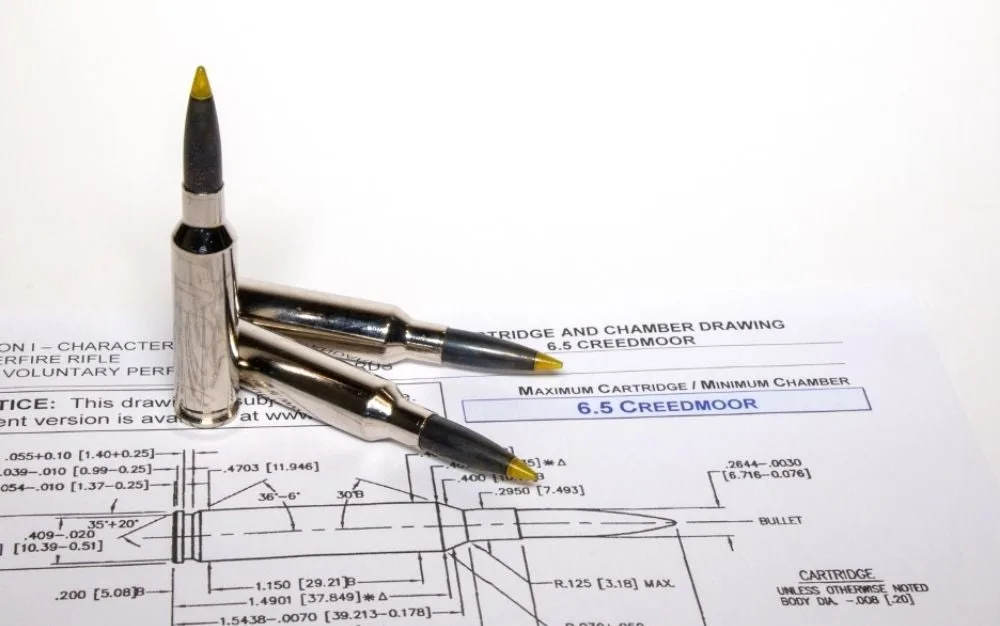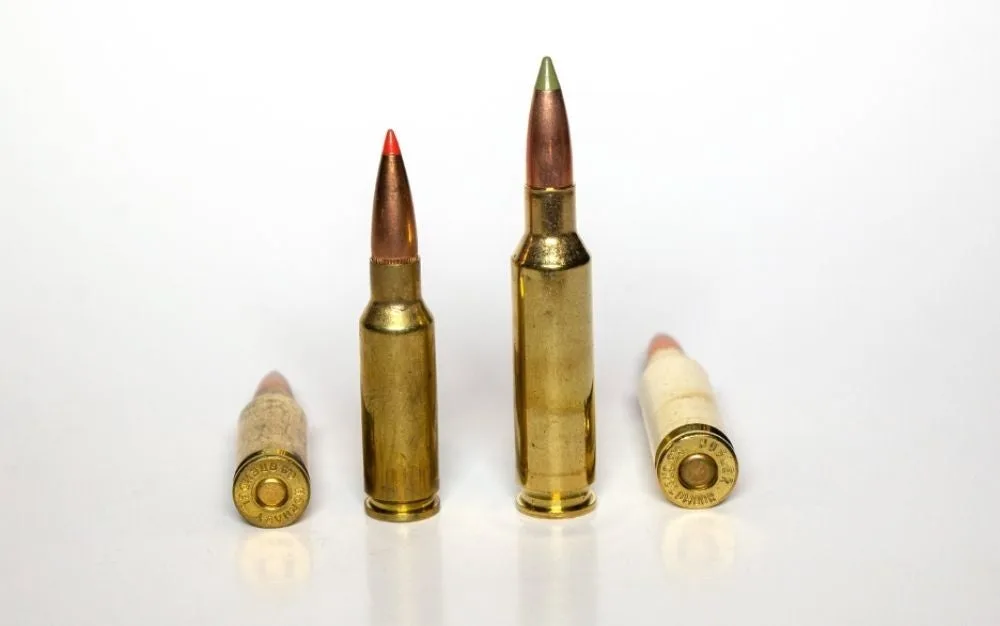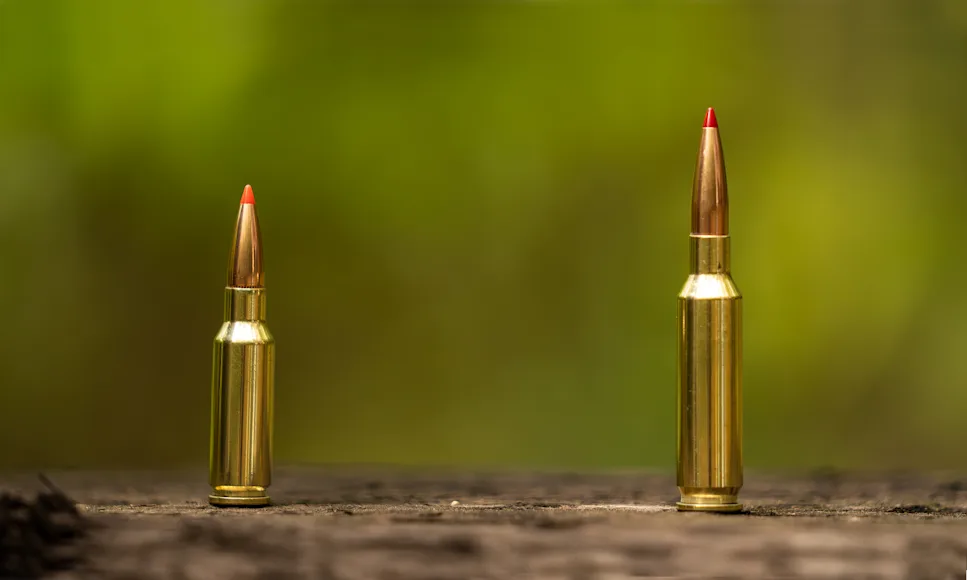We may earn revenue from the products available on this page and participate in affiliate programs. Learn more ›
Some cartridge comparisons are valid because the cartridges in question are very similar and compete to fill the same role. Others are just silly. Since 2014, the 6.5 Creedmoor has risen to stardom at an incredible pace. Not only has it become the most popular of all the 6.5mm cartridges, but it has also become one of the most popular rifle cartridges in any caliber.
Still, some shooters and hunters are beginning to question if the 6.5 Creedmoor is the best 6.5mm cartridge for them. Some are wondering if maybe the 6.5 Grendel might be a better option. In some ways the comparison is valid, but in many ways, it’s not. While you can use both cartridges similarly in some hunting and sport shooting applications, it’s not an apples-to-apples comparison. Both utilize the same diameter bullet but operate in different power bands.
Of course, the internet and the sporting press are full of articles by devotees of both cartridges, and with the information presented in such a biased fashion, it can be hard for the average shooter or hunter to make a choice between the two. Well, I am here to set the record straight. Here is a deep dive into the history of both cartridges and the differences between them.
6.5 Grendel vs 6.5 Creedmoor: Table of Contents
6.5 Grendel
6.5 Creedmoor
6.5 Grendel vs. 6.5 Creedmoor Ballistic Comparison
Predator Hunting
Deer-Sized Game
Large Game
Long-Range Shooting
The Winner Is...
Best Loads for Each
The 6.5 Grendel

Though it may come as a surprise, the 6.5 Grendel has been around longer than the 6.5 Creedmoor. Bill Alexander of Alexander Arms worked for several years to develop the 6.5 Grendel, and he released it in 2003 as a proprietary cartridge. The Grendel is based on the 7.62x39mm Soviet cartridge which rose to fame in the AK 47. Alexander simply necked the 7.62x39mm case down to 6.5mm and blew out the shoulder to eliminate the case’s extreme taper. Then, Alexander did something that would hurt his new cartridge more than help it—he trademarked the name.
The trademark meant that other ammunition companies could not produce ammunition for the 6.5 Grendel without permission from Bill Alexander. This resulted in most ammunition manufacturers ignoring it. Typically, when a manufacturer introduces a new cartridge, it’s submitted to SAAMI (Sporting Arms and Ammunition Manufacturer’s Institute) for approval. SAAMI is an organization that establishes guidelines for firearms and ammunition to ensure compatibility and safety. SAAMI standards are the reason 30-30 Winchester ammunition from 1920 will work in a 30-30 rifle manufactured in 2020.
To the surprise of many, the 6.5 Grendel found a lot of interest even though it was not a SAAMI-approved cartridge. Between its introduction in 2003 and ultimate SAAMI approval nine years later, it became sort of a cult cartridge, well appreciated by many who wanted to hunt or shoot at extended range with the AR15 platform. With SAAMI acceptance, Bill Alexander relinquished his federally registered trademark on the 6.5 Grendel, and it quickly went from an almost unknown cartridge to a moderatley popular one.
The ballistics of the 6.5 Grendel were better than just about any other cartridge compatible with the AR15 platform at that time. With the ability to launch a 120-grain bullet to almost 2600 fps, the Grendel far outclassed what other current AR15 cartridges were capable of at distance. With the high ballistic coefficients associated with 6.5mm bullets, not only did the 6.5 Grendel hit harder at longer distances, but it also shot flatter.
In no time, 6.5 Grendel ammunition was being loaded by various manufacturers and the cartridge was being chambered in various AR15s and even in compact bolt-action rifles. In both, 6.5 Grendel barrel lengths range from 16 to 20 inches, providing tactical, practical, and sporting versions of the rifles available in this chambering. A major online ammunition retailer offers 20 different loads for the 6.5 Grendel.
The 6.5 Creedmoor

When Hornady introduced the 6.5 Creedmoor in 2008, hardly anyone cared. Some mistakenly believe the 6.5 Creedmoor found its popularity because of excellent marketing by Hornady. In truth, and by most metrics, the introduction of the 6.5 Creedmoor and the related marketing was a failure. It wasn’t until the release of the movie American Sniper in 2014—six years after the introduction of the 6.5 Creedmoor—when everyone decided they needed to become a long-range marksman, that the 6.5 Creedmoor found its popularity. What shooters then discovered was, compared to the other popular long-range cartridges of the time, the 6.5 Creedmoor offered the best balance of downrange ballistics and recoil.
Some mistakenly call the 6.5 Creedmoor the “6.5mm Creedmoor.” That name is incorrect. It is indeed a cartridge that fires a 6.5mm bullet, which, just as with the 6.5 Grendel, equates to a bullet diameter of 0.264-inch. But, the actual and true name of the cartridge, per SAAMI specifications is, “6.5 Creedmoor.”
Depending on the load and barrel length, the 6.5 Creedmoor will launch a 120-grain bullet to about 3000 fps. What is the best barrel length for a 6.5 Creedmoor? Something between 22 and 24 inches is standard, but you can find 6.5 Creedmoor rifles with shorter and longer barrels. Regardless, the 6.5 Creedmoor has about a 16% velocity advantage over the 6.5 Grendel. This is possible because the 6.5 Creedmoor holds more gunpowder and because ammo manufacturers load the 6.5 Creedmoor to 62,000 psi as opposed to 52,000 psi for the Grendel. The “Creed,” as some call the 6.5 Creedmoor, is very similar to the 260 Remington, which does have a slight velocity advantage. However, the Creed’s advantage over the 260 is its SAAMI specified twist rate of 1 turn in 8 inches for barrel rifling and ammunition compatibility.
The 6.5 Creedmoor cartridge case was based on the now-defunct and never popular 30 TC cartridge, which is very similar in dimension to the .308 Winchester. The primary difference between the 30 TC and the 308 Winchester case is length. The 30 TC’s case is a bit shorter, and when necked down to 6.5mm, it can work with the long and sleeker 6.5mm bullets, but still fit inside the magazine box of short-action bolt-action rifles, or inside a magazine that will fit inside an AR10.
6.5 Grendel vs 6.5 Creedmoor Ballistic Comparison

The most common means of comparison between cartridges is with external ballistics. External ballistics account for downrange velocity, energy, and trajectory. If we compare one of the best factory 6.5 Grendel loads with one of the best 6.5 Creedmoor factory loads, we can achieve a very good grasp of what these differences are. To do this, let’s start with velocity.
Velocity
One of the flattest-shooting 6.5 Grendel factory loads is the Hornady Black, 123-grain, ELD-Match load, with a muzzle velocity of 2580 fps. One of the best 6.5 Creedmoor loads is the Hornady 140-grain, ELD-Match load with a muzzle velocity of 2710 fps. As you can see in the chart below, due to its higher muzzle velocity, and the higher BC of the 140-grain bullet, the 6.5 Creedmoor still has a velocity advantage of 277 fps at 500 yards.

Energy
Kinetic Energy is another consideration of external ballistics, and many consider it an expression of the ability of a cartridge to kill game animals. Kinetic energy does not accurately reflect a cartridge’s or bullet’s ability to kill, but more accurately gives an indication of the work a bullet can do. Regardless, it is common to compare the kinetic energy between cartridges. And when comparing the same loads, the 6.5 Creedmoor has the energy advantage from the muzzle all the way out to 500 yards and beyond.

Trajectory
The final and one of the most compared aspects of external ballistics is trajectory. Trajectory deals with how far a bullet will fall below the line of sight at specific distances. Both the Grendel and the Creed are partly popular because they deliver better trajectories than other cartridges of a similar size but that recoil harder. Just as with velocity and energy, when comparing the same loads, the 6.5 Creedmoor has a clear advantage.

These external ballistic comparisons would seem to suggest the 6.5 Creedmoor is clearly the better cartridge. And, if in fact all you care about is velocity, energy, and trajectory, it is. However, if external ballistics were the only thing that mattered, the 6.5 PRC cartridge is clearly better than the 6.5 Grendel or the 6.5 Creedmoor. To truly compare the Creed and the Grendel, one should look at these cartridges regarding how they can perform at the specific tasks hunters and shooters will likely ask of them.
Grendel vs Creedmoor for Predator Hunting
Though hunters sometime shoot predators at great distances, it’s more common that they’re called in close, or at least inside 300 yards. At those distances the 6.5 Creedmoor does not have enough of an external ballistic advantage to matter, nor will it kill a coyote any quicker or deader than a 6.5 Grendel. Here the advantage probably goes to the Grendel. This is because you can get a lighter Grendel rifle, or have it chambered in an AR15 that will offer faster follow-up shots. Unless your predator hunting will frequently require shots on the other side of 300 yards, the Grendel is probably your best bet.
Read Next: The .308 vs .30-06
Grendel vs Creedmoor for Deer-Sized Game
For deer-sized game, you could make the same argument for the Grendel. It will handily dispatch deer out to 300 yards, and it will do it with a lighter-weight rifle. In fact, if you have an AR15 chambered for the 223 Remington, you can turn it into a 6.5 Grendel by simply switching to a different upper. But there is another element you need to consider: terminal ballistics.
Given a similar broadside shot with a well-constructed bullet, a 6.5 Creedmoor will not kill deer better than a 6.5 Grendel. However, because the 6.5 Creedmoor can fire heavier bullets with better penetration potential, it is a better option if you might take less than ideal shots, or if the range is going to extend beyond 300 yards. To some extent, reloading the 6.5 Grendel can enhance its effectiveness beyond that of factory ammo, but it will never hit as hard as the 6.5 Creedmoor.
Grendel vs Creedmoor for Large Game
Can you effectively use a 6.5 Grendel on game larger than deer? For sure. However, it’s probably best regulated for game weighing less than 400 pounds or so. With Grendel ammo, the heaviest weight bullet is typically 123 grains. With the 6.5 Creedmoor, there are bullets that are 16% heavier and specifically designed for deep penetration. When it comes to the 6.5 Creedmoor for hunting, especially large game, it is not the best of the 6.5mm rifle cartridges, but it is better than the 6.5 Grendel.
Grendel vs Creedmoor for Long-Range Shooting
By looking at the trajectory table it’s clear the 6.5 Creedmoor is superior to the 6.5 Grendel when it comes to shooting at distance. However, out to 450 yards, there’s not enough difference to substantially hinder a skilled long-range marksman, and the 6.5 Grendel recoils sustainably less. That can matter a lot after a long day on the range. Also, if you want to shoot long-range with an AR15, the 6.5 Creedmoor is not an option. On the other hand, by today’s standards, many shooters do not consider 450 yards as long-range. Beyond that distance, the 6.5 Creedmoor is unquestionably the better choice.
And the Winner Is...
When it comes to the 6.5 Grendel vs 6.5 Creedmoor, you cannot really select a winner until you have stipulated what specific tasks are begin considered. There’s no question the 6.5 Creedmoor is the more powerful cartridge, but power isn't the only thing that matters. Application matters and to select the best cartridge you must make comparisons based on what you want to do with the cartridges in question.
When it comes to hunting, both cartridges are at their best when used on pronghorns, whitetails, and mule deer. If 90% of your shots will be within 300 yards, the Grendel is a great choice. Beyond that distance, the Creedmoor will serve you better because it will shoot flatter and retain more velocity for the bullet to work with. With either cartridge, ammunition selection is always important. There are lots of great options with the Creed, but less with the Grendel.
Best Loads for the 6.5 Grendel and 6.5 Creedmoor
With the 6.5 Grendel there are only about 20 factory loads from around half that many manufactures to choose from. For general purpose, a 123-grain bullet will offer the best balance of ballistics, and Hornady’s 123-grain SST load at 2580 fps is a great option.

With the 6.5 Creedmoor, there are more than five times as many factory loads. If regulated to a single load for hunting predators, deer, larger game, and for shooting at distance, I’d seriously consider is the Barnes VOR-TX LR 127-grain LRX at 2825 fps. It shoots reasonably flat and would provide deep penetration on larger beasts.



